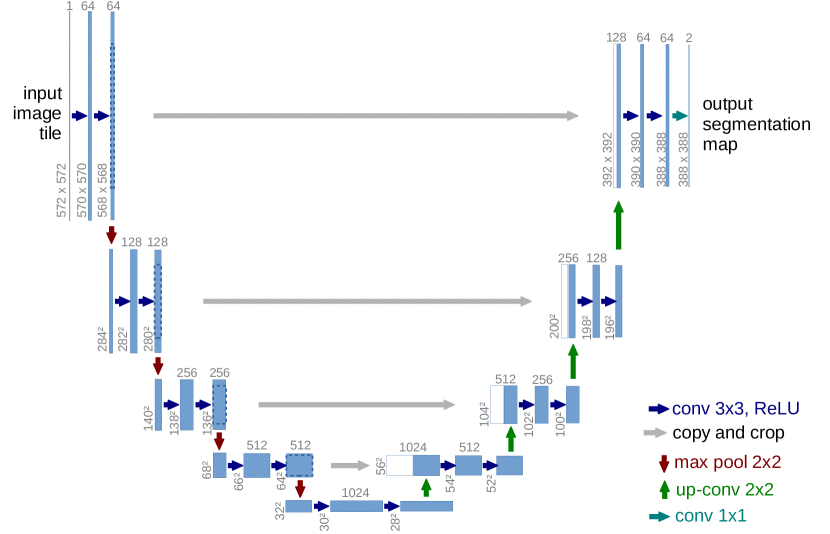Idea
The U-Net architecture consist of two main paths: the contracting path (encoder) and the expansive path (decoder), forming a U-shaped structure
- Contracting Path: This part captures context through a series of convolutional layers (3x3 convolutions) followed by ReLU activation and max pooling operations. Each downsampling step doubles the number of feature channels, allowing the network to learn increasingly abstract features while reducing spatial dimensions.
- Expansive Path: This path is responsible for upsampling the feature maps to the original image size. It includes up-convolutions (2x2 convolutions) that halve the number of feature channels, followed by concatenation with the corresponding feature maps from the contracting path (called skip connections). This concatenation helps retain localization information lost during downsampling, enabling precise segmentation.
 The model is designed for biomedical image segmentation where the training data is fewer and expansive. Therefore, the U-Net architecture employs the symmetric skip connections to produce high-quality segmentation results even with limited training data.
The model is designed for biomedical image segmentation where the training data is fewer and expansive. Therefore, the U-Net architecture employs the symmetric skip connections to produce high-quality segmentation results even with limited training data.
In addition, the robustness of U-Net has let it be applied to general image segmentation tasks, and the performances are also fantastic.